45 labels and selectors in kubernetes
certified-kubernetes-administrator-course/04-Labels-and-Selectors.md at ... Labels and Selectors. Take me to Video Tutorial; In this section, we will take a look at Labels and Selectors. Labels and Selectors are standard methods to group things together. Labels are properties attached to each item. Selectors help you to filter these items. How are labels and selectors are used in kubernetes? The Purpose of Labels and Selectors in Kubernetes 15 Jan 2021 • 1 min read. In short, labels are a way to group and reference an object. For instance, you could group all APIs with a label like type: api. Selectors are just a way to reference objects by labels. If we set a selector to type: api, then it would be referencing all objects with that label. This turns out to be a wildly useful ...
Kubernetes Labels, Selectors, and Annotations | Getting Started As their name suggests, label selectors allow you to identify the objects you have tagged with particular labels. Label selectors can either be equality-based or set-based. Equality-based label selectors work by specifying an exact value that you want to match against.

Labels and selectors in kubernetes
A Kubernetes Guide for Labels and Selectors | Datree.io Labels can be used by both Kubernetes and homo-sapiens to organize and to select subsets of objects. When dealing with Kubernetes config files, labels are always added under the "metadata" section of the manifest. Labels vs annotations Annotations are also key-value pairs that are attached to objects and are used to describe Kubernetes resources. Labels and Selectors | Kubernetes Labels and Selectors | Kubernetes Labels are key/value pairs that are attached to objects, such as pods. Labels are intended to be used to specify identifying attributes of objects that are meaningful and relevant to users, but do not directly imply semantics to the core system. Labels can be used to organize and to select subsets of objects. Labels and Selectors - Kubernetes - GitLab Label selectors. Unlike names and UIDs, labels do not provide uniqueness. In general, we expect many objects to carry the same label(s). Via a label selector, the client/user can identify a set of objects. The label selector is the core grouping primitive in Kubernetes. The API currently supports two types of selectors: equality-based and set ...
Labels and selectors in kubernetes. Working with labels and selectors | Kubernetes Cookbook - Packt Working with labels and selectors Labels are a set of key/value pairs, which are attached to object metadata. We could use labels to select, organize, and group objects, such as Pods, ReplicaSets, and Services. Labels - Unofficial Kubernetes The kubernetes.io/ prefix is reserved for Kubernetes core components. Valid label values must be 63 characters or less and must be empty or begin and end with an alphanumeric character ... Labels selectors for both objects are defined in json or yaml files using maps, and only equality-based requirement selectors are supported: "selector ... 9 (additional) Best Practices for Working with Kubernetes Labels and ... Kubernetes controllers use label selectors (.spec.selector) to ensure that the desired number of pods with the same label key and value as the selector, are operational. When spinning up Kubernetes controllers like ReplicaSets, Deployments or StatefulSets always ensure that the label selector is the same as the pod template label. Kubernetes labels, selectors & annotations with examples Labels give us another level of categorization, which becomes very helpful in terms of everyday operations and management. Labels are attached to Kubernetes objects and are simple key: value pairs. You will see them on pods, replication controllers, replica sets, services, and so on.
Labels and Selectors - Kubernetes The label selector is the core grouping primitive in Kubernetes. The API currently supports two types of selectors: equality-based and set-based . A label selector can be made of multiple requirements which are comma-separated. In the case of multiple requirements, all must be satisfied so the comma separator acts as a logical AND ( &&) operator. Kubernetes Core Concepts - Labels, Selectors and Annotations What are Selectors in Kubernetes? Selectors are used to filter out objects based on their assigned Labels. Labels and Selectors goes hand in hand. For example Selectors will help us filter out objects like give all the application pods which are of type staging. Example syntax to define Selectors Kubernetes field selectors vs label selectors - Stack Overflow In Kubernetes field selectors are limited to certain fields for each resource Kind. But almost every resource has field selector for name and namespace on metadata If so why there's a need to have a separate label selector. labels: { app: foo } Instead of querying kubectl get pods -l app=foo, why couldn't it be part of generic field selector like: Using Kubernetes Annotations, Labels, and Selectors Annotations, labels, and selectors are used to manage metadata attached to your Kubernetes objects. Annotations and labels define the data while selectors provide a way to query it. Here are the differences between the three concepts, what they're designed for, and how you can use them to manage your resources. Annotations
Filtering Kubernetes Resources using Labels, Annotations, and Selectors ... Selectors are used to identify objects tagged with particular labels in Kubernetes. You can use selectors to group the relevant resources. For example, you can use selectors to map the pods that share the same label for a service. For more information, see the official Kubernetes documentation on Labels and Selectors . Labels and Selectors — Kubernetes on AWS 0.1 documentation Labels and Selectors ¶ Labels are key/value pairs that are attached to Kubernetes objects, such as pods (this is usually done indirectly via deployments). Labels are intended to be used to specify identifying attributes of objects that are meaningful and relevant to users. Labels can be used to organize and to select subsets of objects. What is the difference between Label and Selector in kubernetes? Via a label selector, the client/user can identify a set of objects. The label selector is the core grouping primitive in Kubernetes. In a nutshell label selectors depend on labels to select a group of resources such as pods. For example a deployment selects a group of pods by a label selector in the deployment spec. Share Kubernetes - Labels & Selectors - Tutorials Point Labels selector are core grouping primitive in Kubernetes. They are used by the users to select a set of objects. Kubernetes API currently supports two type of selectors − Equality-based selectors Set-based selectors Equality-based Selectors They allow filtering by key and value. Matching objects should satisfy all the specified labels.
Kubernetes, Labels and Selectors - Automated Ramblings Labels are a key/value formatted peice of metadata attached to an object within Kubernetes. Labels provide additional information about the object with relevance to the consumer or object. For example, a label can specify hardware characteristics of a node or if a workload is for testing of production. Labels implicitly group like objects ...
Learn Kubernetes Labels By Following Examples - Densify K8s selectors allow users to filter objects based on labels, and can be used by the Kubernetes platform as well. user perspective, K8s labels and selectors can manipulate objects such as: Pods Nodes Services Secrets Ingress Resources Deployments Namespaces Why do we need to use Kubernetes labels?
Understanding Labels, Selectors and Annotations in Kubernetes There are two kinds of selectors. Equality-based and Set-based selectors. Equality-based requirement Equality based selectors help you filter resources equal to a certain key and value. You would following operators for equality based-requirements: = == != Example # this command would give us all resources with the env =prod label
Civo Academy - Learn about pod labels and selectors - Civo.com Now, labels are defined in the metadata section. So there is a field called label and is the location where the labels are written. What are pod selectors? Now, another part where labels are used is the Selector Section. So there's a field called selectors in most of the Kubernetes objects, so they select on the basis of the labels. So, for ...
6. Labels, annotations, selectors - Kubernetes Tasks 0.1 documentation Create service (only routable inside cluster). The service is assigned Cluster IP (DNS record is automatically created) which load-balance across all of the pods that are identified by the selector. $ kubectl expose deployment app1-prod.
How to Provision Node Labels and Selectors in Kubernetes? (K8s) Labels selectors are core grouping primitive in Kubernetes. They are used by the users to select a set of objects. Kubernetes API currently supports two types of selectors − Equality-based...
Using K8s Label Selectors in Go without doing it wrong The labels.Selector interface is located in the apimachinery repo under pkg/labels/selector.go. It's used to read and query Kubernetes Objects via their labels. You should use it because: It...
Kubernetes - Wikipedia Labels and selectors. Kubernetes enables clients (users or internal components) to attach keys called "labels" to any API object in the system, such as pods and nodes. Correspondingly, "label selectors" are queries against labels that resolve to matching objects. When a service is defined, one can define the label selectors that will be used by ...
Kubernetes: Usage and Understanding of Kubernetes Labels, MatchLabels ... Labels are key/value pairs that are attached to objects, such as pods. Labels are intended to be used to specify identifying attributes of objects that are meaningful and relevant to users. Labels can be attached to objects at creation time and subsequently added and modified at any time Each object can have a set of key/value labels defined.
Labels and Selectors in Kubernetes - HowtoForge To get Pods matching a label of our choice, we can "--selector" in the command as follows. kubectl get pods --selector environment=test kubectl get pods --selector app=nginx We can also use "-l" instead of "--selector" to get the Pods matching the label of our choice. kubectl get pods -l environment=test kubectl get pods -l environment=prod
Kubernetes Labels & Selectors - Kubernetes - Wisdom Jobs Selectors. Labels do not offer individuality. In overall, we can say numerous objects can carry the same labels. Labels selector are core grouping primitive in Kubernetes. They are used by the users to choose a set of objects. Kubernetes API currently supports two type of selectors −. Equality-based selectors; Set-based selectors; Equality ...

What I learned about Kubernetes - (Scheduling - Manual Scheduling, Labels and Selectors) ~ Root ...
Labels and Selectors | Kubernetes Information v1.24 v1.23 v1.22 v1.21 v1.20 English Chinese 한국어 Korean 日本語 Japanese Español Bahasa Indonesia Русский Home Available Documentation Versions Getting started Learning environment Production environment Container runtimes Installing Kubernetes with deployment tools Bootstrapping clusters with kubeadm Installing...
Labels and Selectors - Kubernetes - GitLab Label selectors. Unlike names and UIDs, labels do not provide uniqueness. In general, we expect many objects to carry the same label(s). Via a label selector, the client/user can identify a set of objects. The label selector is the core grouping primitive in Kubernetes. The API currently supports two types of selectors: equality-based and set ...
Labels and Selectors | Kubernetes Labels and Selectors | Kubernetes Labels are key/value pairs that are attached to objects, such as pods. Labels are intended to be used to specify identifying attributes of objects that are meaningful and relevant to users, but do not directly imply semantics to the core system. Labels can be used to organize and to select subsets of objects.
A Kubernetes Guide for Labels and Selectors | Datree.io Labels can be used by both Kubernetes and homo-sapiens to organize and to select subsets of objects. When dealing with Kubernetes config files, labels are always added under the "metadata" section of the manifest. Labels vs annotations Annotations are also key-value pairs that are attached to objects and are used to describe Kubernetes resources.



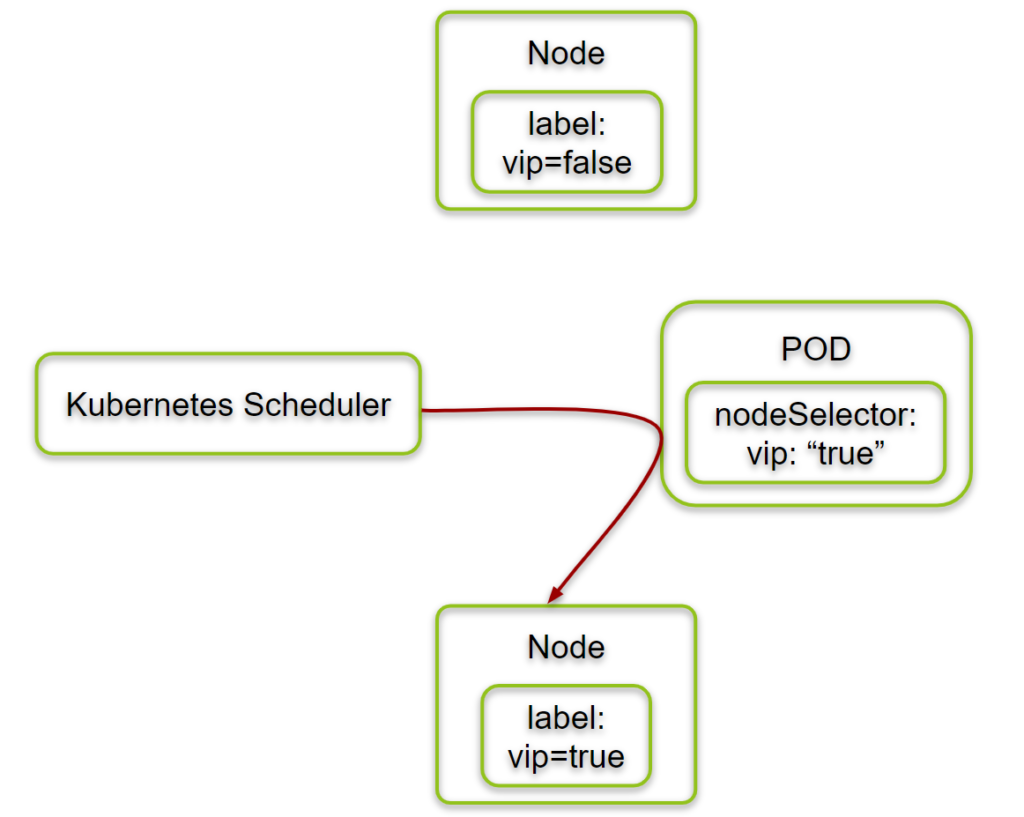


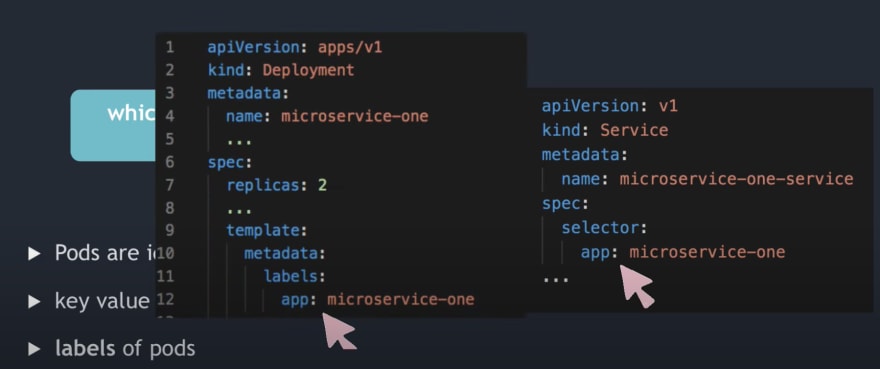
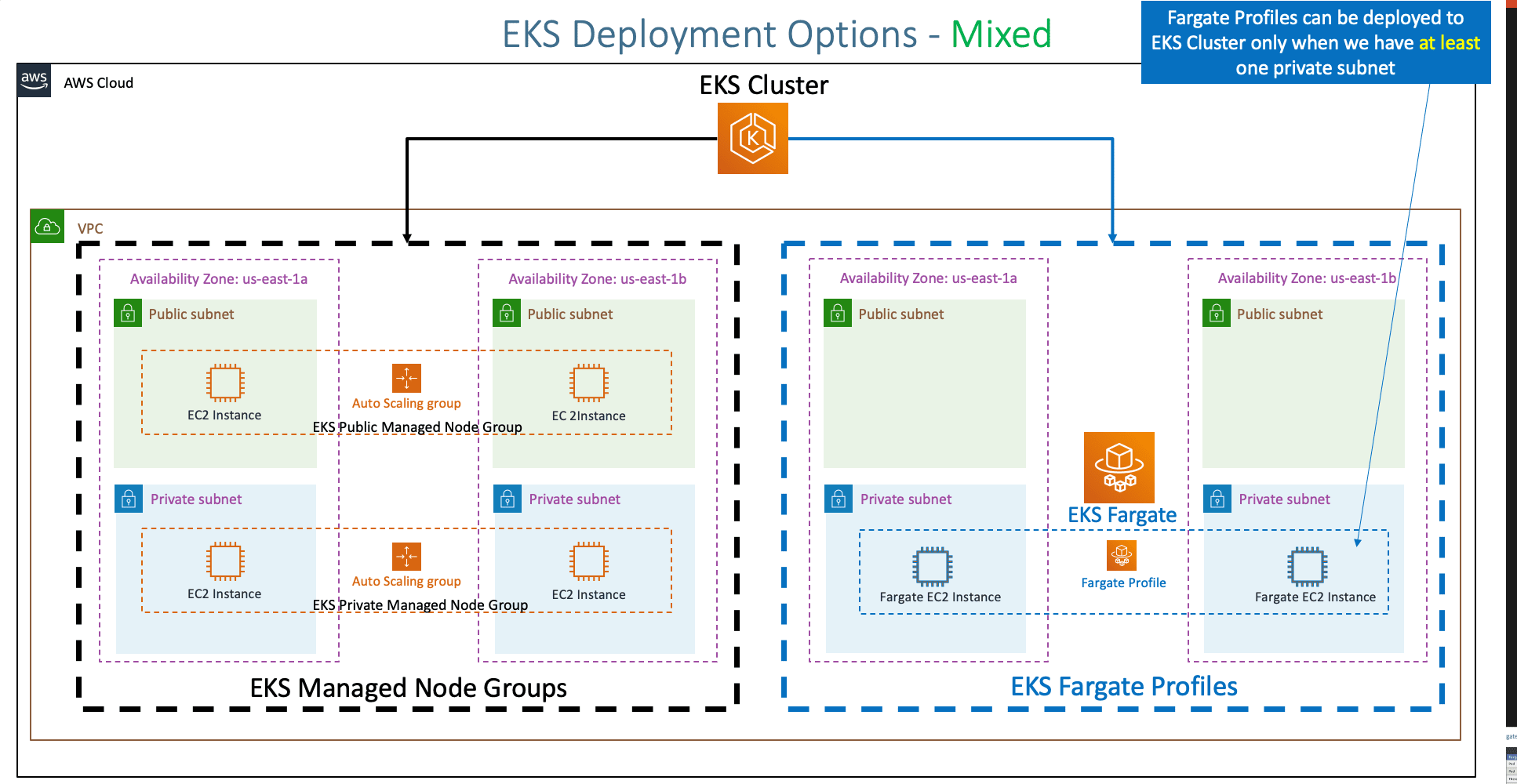


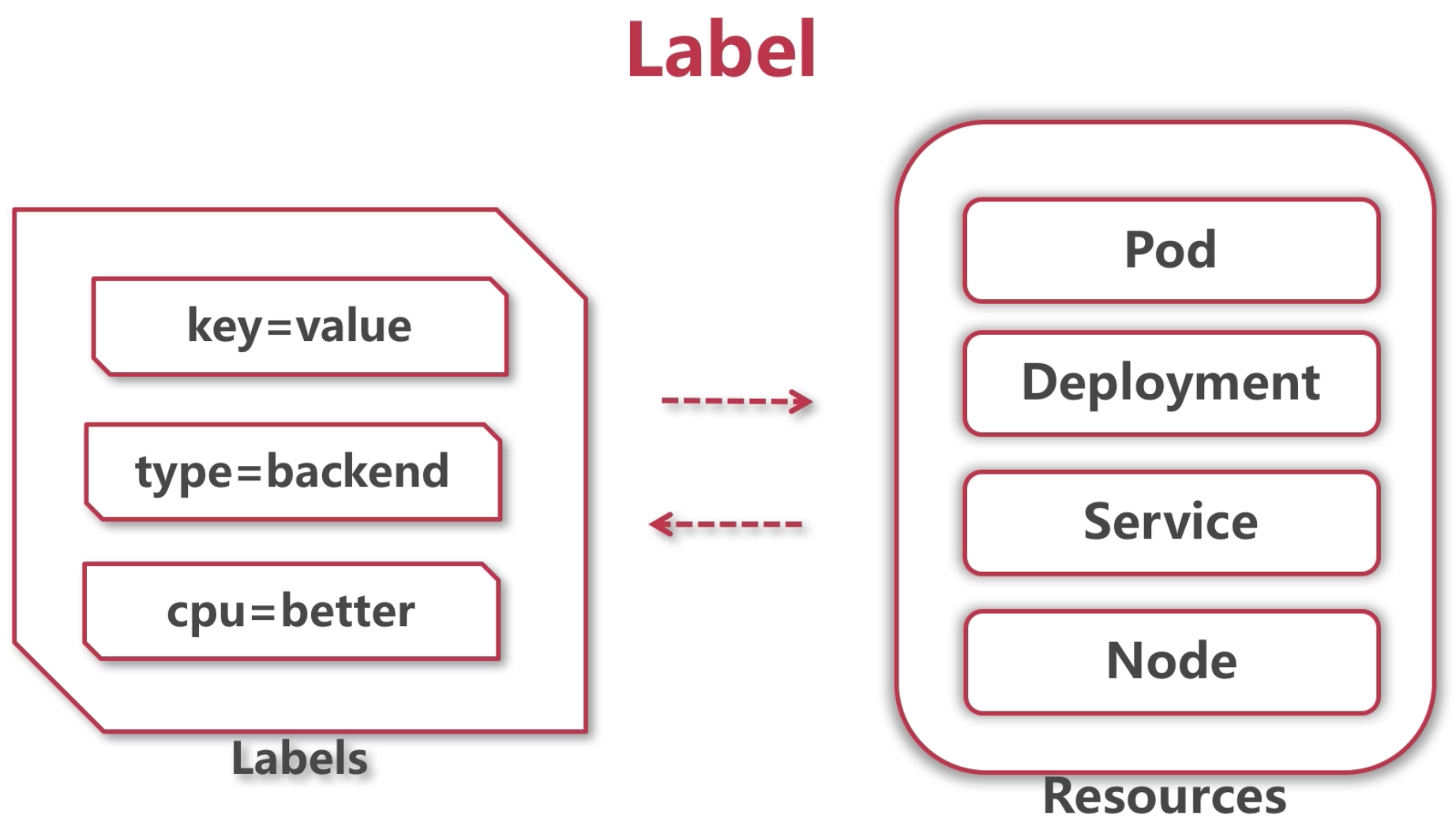
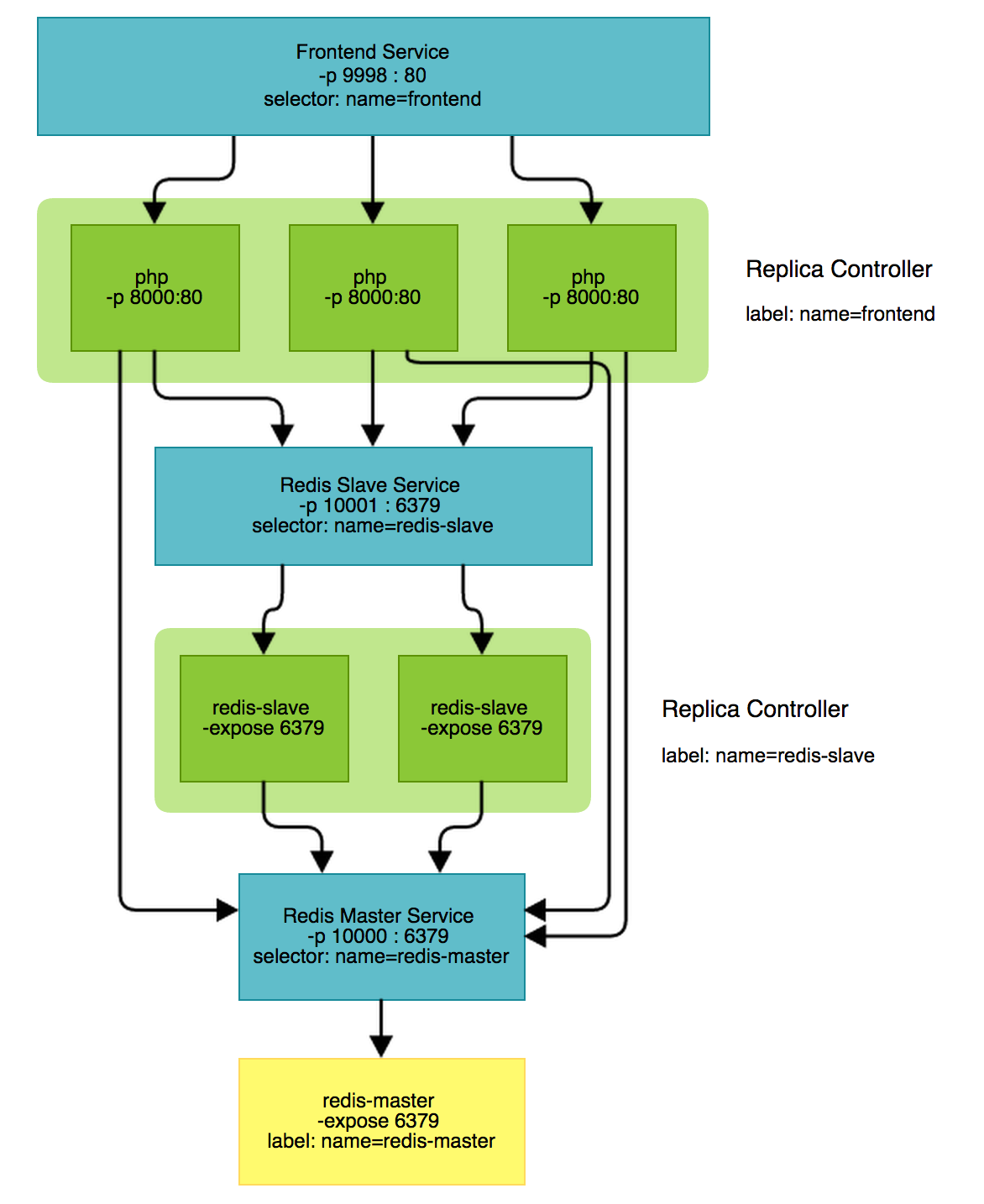


Post a Comment for "45 labels and selectors in kubernetes"